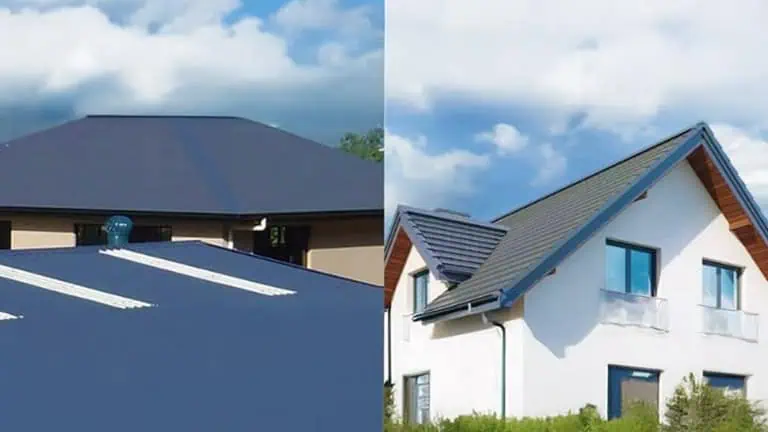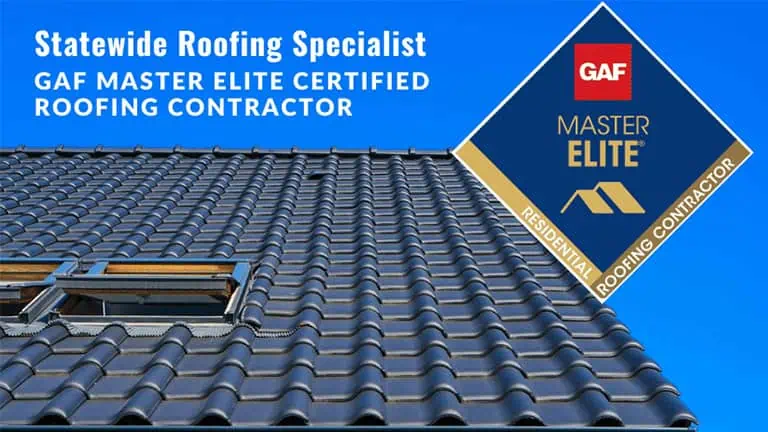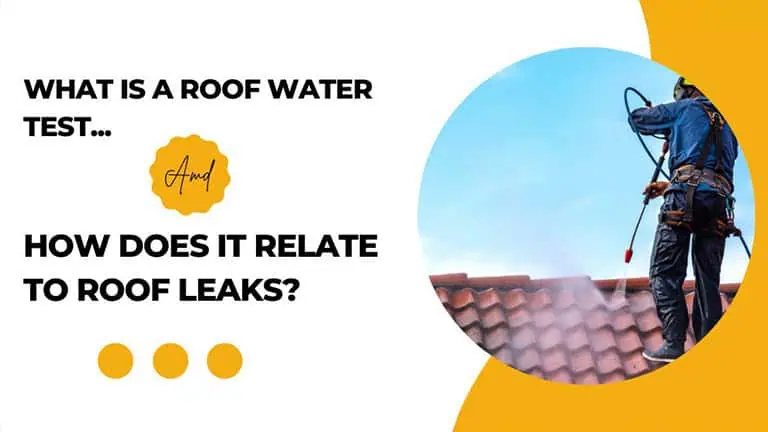
Roofing is a complex topic, even for experts. When it comes to roof installation, there’s one thing — a component that plays an important role. Yes, the pitch of the roof! also known as the ‘slope. The pitch of a roof often gets in the way of homeowners and contractors while installing the roof.
Let’s find out why we should be considerate about the slopes of the roofs.
Why does it matter? It’s just a roof
Correct. All roofs are made for the same purpose — to provide protective shelter. The difference between roofs lies in their manufacturing, type of materials, and designs. If you’re already feeling alienated, here’s what a roof is.
A roof is the covering on top of a building to protect it from the weather. The materials used to build roofs vary. They include wood, metal, and concrete. Roofs also come in different shapes and sizes. In simple terms, a roof is a covering structure that protects the building (and you of course).
As said, the roofs vary in design and materials. Some are robust and withstand harsh weather while others are just having appealing exteriors. Like roof designs, the slopes are different too, and have different features, specifications, and prices (let’s not forget the last thing).
In this article, we’ll be focusing on two types of roofs: Steep slope roofs and Low Slope Roofing.
Steep Slope Roofing
Let’s start with understanding the basic differences between low-slope and steep-slope roofing. Steep-slope roofing is a material that is used for roofs with slopes 3:12 or greater. For this, the roof should have a slope of at least 15-18 degrees. A steep-slope roof can provide more headroom for taller homes or allow for better ventilation in warmer climates. This is why most residential and commercial buildings in the US have Steep-Slope roofs.
Steep-slope roofs are available in a wide range of roofing materials, wood, tile, shingles, slate, and metal. The type that gives a building an aesthetic, homelike exterior is the asphalt shingles for steep-slope roofs.
Low Slope Roofing
As the name should ring bells, low slope roofing is designed to cover roofs that have a pitch of the slope to at least 5 degrees. Notice that the key difference between these roof types is the pitch. Homeowners often get confused about this angle thing, but the fact is both are the same with different slope dimensions. Low-slope roofs are what you can call ‘a-nearly-flat-roof’— because it is completely not flat.
For this, industrial buildings acquire low-slope roofs more than homeowners. Plus, it can also cover more area per square foot. As for manufacturing, low-slope roofs are made with common materials that mostly include PVC, UPVC, TPO, EPDM, built-up roofs, metal, and modified bitumen. Due to the exquisite materials being used, low-slope roofs are also low-cost and can benefit most residential roof designs.
Advantages and Disadvantages of a Steep-Slope Roof
Are you a physics geek? Because the first benefit of a steep-slope roof involves gravity. Don’t worry, we’ll explain how gravity helps the pitched roof to become an ideal weather-centric roof. A pitched roof has greater roof slopes, allowing the snow, rain, or any liquid (or rubble) to flow down the roof. Now, about that gravity, the pitch of the slopes creates a path with the help of gravity and channels the water off the roof.
Slope & Flow makes the water go
Steep-slope roofs have slopes that do not let the water stay on the roof. As you know, water slides down to (wherever) the slopes are. This is why the steep slope roofs are drier and since the water does not stay, the slopes eliminate the opportunities for leakage, mold, or mildew. Thus, increasing the longevity of your roof. Wouldn’t you want that? Of course, you do!
No Ice or Snow Stacking
Apart from the water, steep slope roofs are also helpful during snow or hailstorms. If you happen to live in an area where you often get snow, better install the steep slope fast to prevent ice or snow from stacking up on your roof.
A-Shape Design
Mostly, steep-slope roofs are installed on structures that have an A-frame design. The reason being is that the greater the slope is the more water-resistant it will become. Plus, you will have ample space for the attic. But before that, go through the pitch’s specification
because you can get more storage space if the design is not too shallow.
With all these pros, you must be wondering if there are any cons to steep-slope roofs. Well, of course, there are!
Difficult Navigation
With great slopes come great difficulties. The pitch of the slopes is not flowy only for the debris and liquid—but for individuals too. So, if you’re thinking about doing something DIY on the steep-slope roof, consider the slopes first.
Labor Cost
Since you will not have the expertise to navigate on the roof, you will eventually have to call the professionals. Besides, you will be calling them anyway for repair, replacement, maintenance, or installation. Now, due to the pitches, the labor costs increase with effort.
Expensive
Steep slopes roofing is preferred mostly on residential buildings. However, if you opt for a commercial building, it will be awfully expensive. The design, the labor cost, and the material — all can cost you a lot.
That all being said. Let’s take a look at the pros and cons of a low-slope roof.
Advantages and Disadvantages of a Low-Slope Roof
Flat and low-slope roofs also come in handy when you want to cover more roof areas. There is a certain proportion of homeowners in the US who prefer to have flat roofs over their heads. Residents install low-slope roofs to cover decks and porches. Here are some prominent benefits and drawbacks of installing low slope roof:
Affordable Installation
Unlike steep slopes, flat roofs are very cheap and quite simple to install. You’d need less building material and pay for less labor costs. Also, the design of the building plays an important role here. If the specs meet with the flat roof, then you will certainly be saving a lot on installation and maintenance.
Warmer & Cooler
You will not have to add extra space for the attic compared to steep slopes. The airflow gets away into the attic and thus the cooling or heating system will have to maintain the temperature accordingly. On a low steep roof, the surface limits the air, allowing the building to stay cooler in winter and warmer in summer seasons.
A Multi-purpose Roof
If you’re intrigued by the extra attic space available on the steep slope roof, know that you can add sun deck space on the low steep roof. Now, you can’t add in pitched roofs. You can also create a shed over the roof to give and enjoy sunbathing.
Now, let’s talk a little about the cons of low-steep roofs.
Limited Material Choice
Unlike steep-slope roofs that are available in many material types, you will be limited to choosing between material types that are only available in flat roofs.
Snow Stacks
If you happen to live in an area that undergoes frequent snow, then you probably don’t want to install a low-slope roof. The reason is that flat roofs stack ice and snow and unless it dries out, you will have a contact worry of leakage.
Very Frequent Maintenance
Since low-slope roofs are prone to leakage, you will be running frequent inspections on the roof. This might also open a little door for the labor cost if you’re unable to DIY.
Choosing between steep slope and low slope roofing depends on your building’s design, functionality needs, and what you prefer. Each option has its benefits—steep slopes offer great looks and better water shedding, while low slopes are more cost-effective and easier to maintain. Understanding these differences will help you make the right choice for your property.
If you’re still unsure which is best for you, the team at Statewide Roofing Specialist is here to provide personalized advice and professional roofing solutions. Contact us today!



